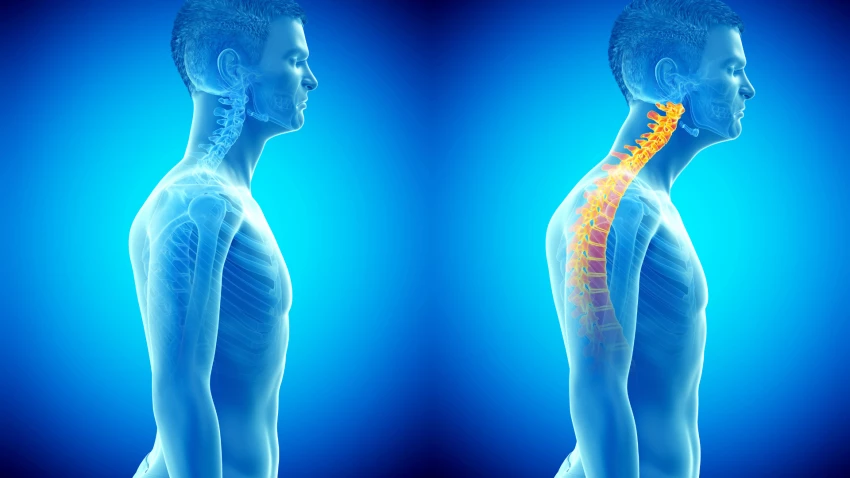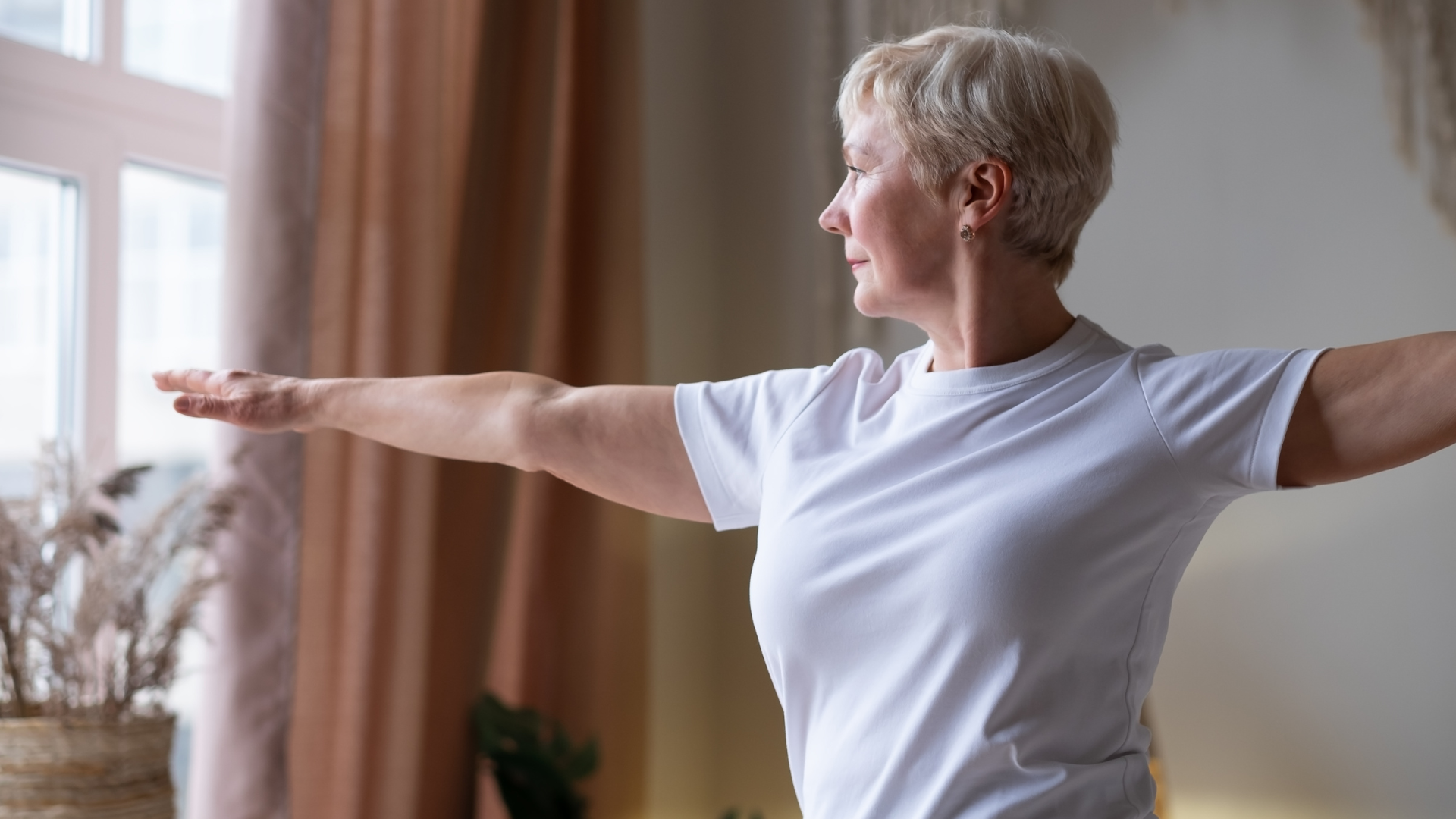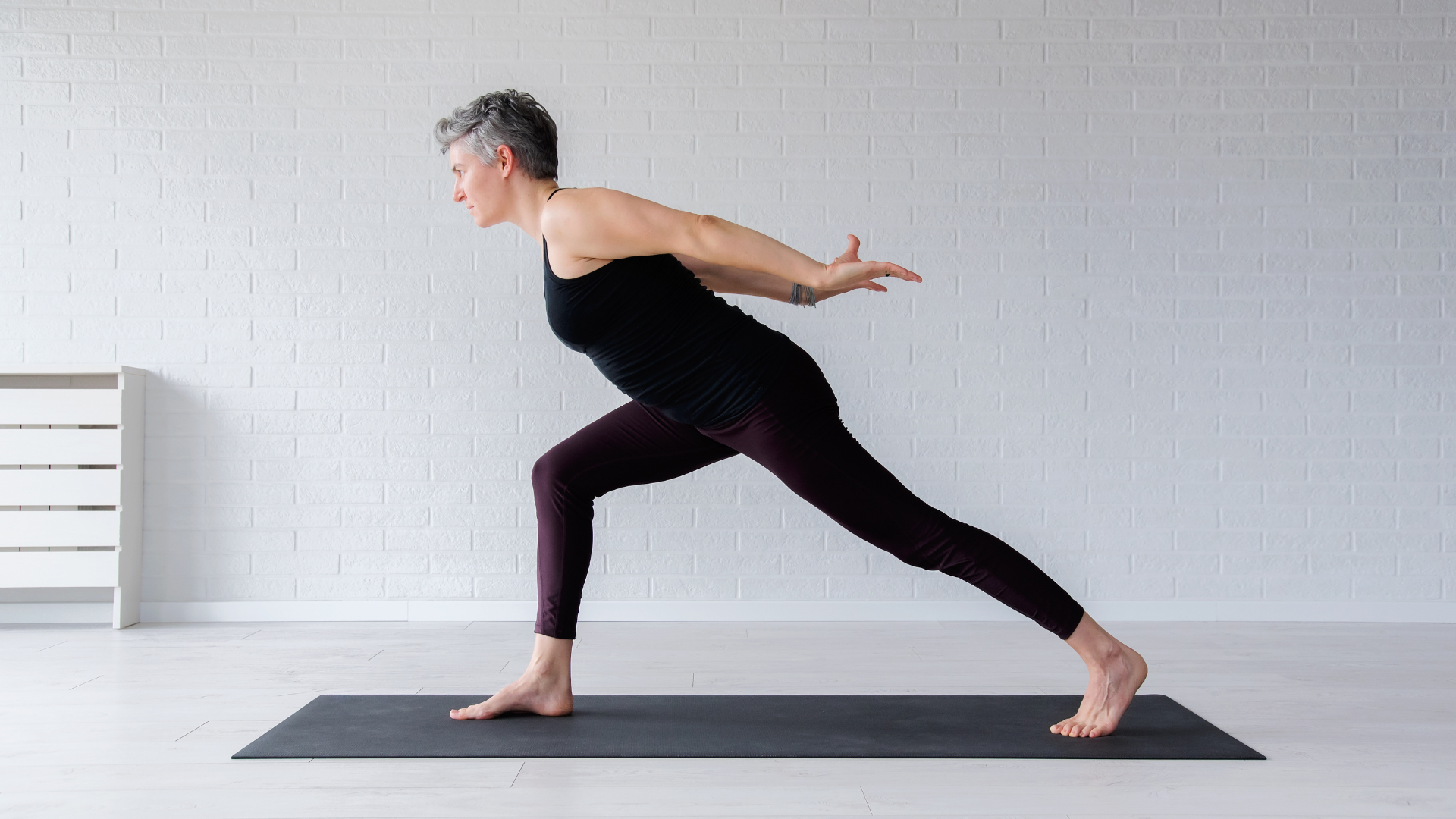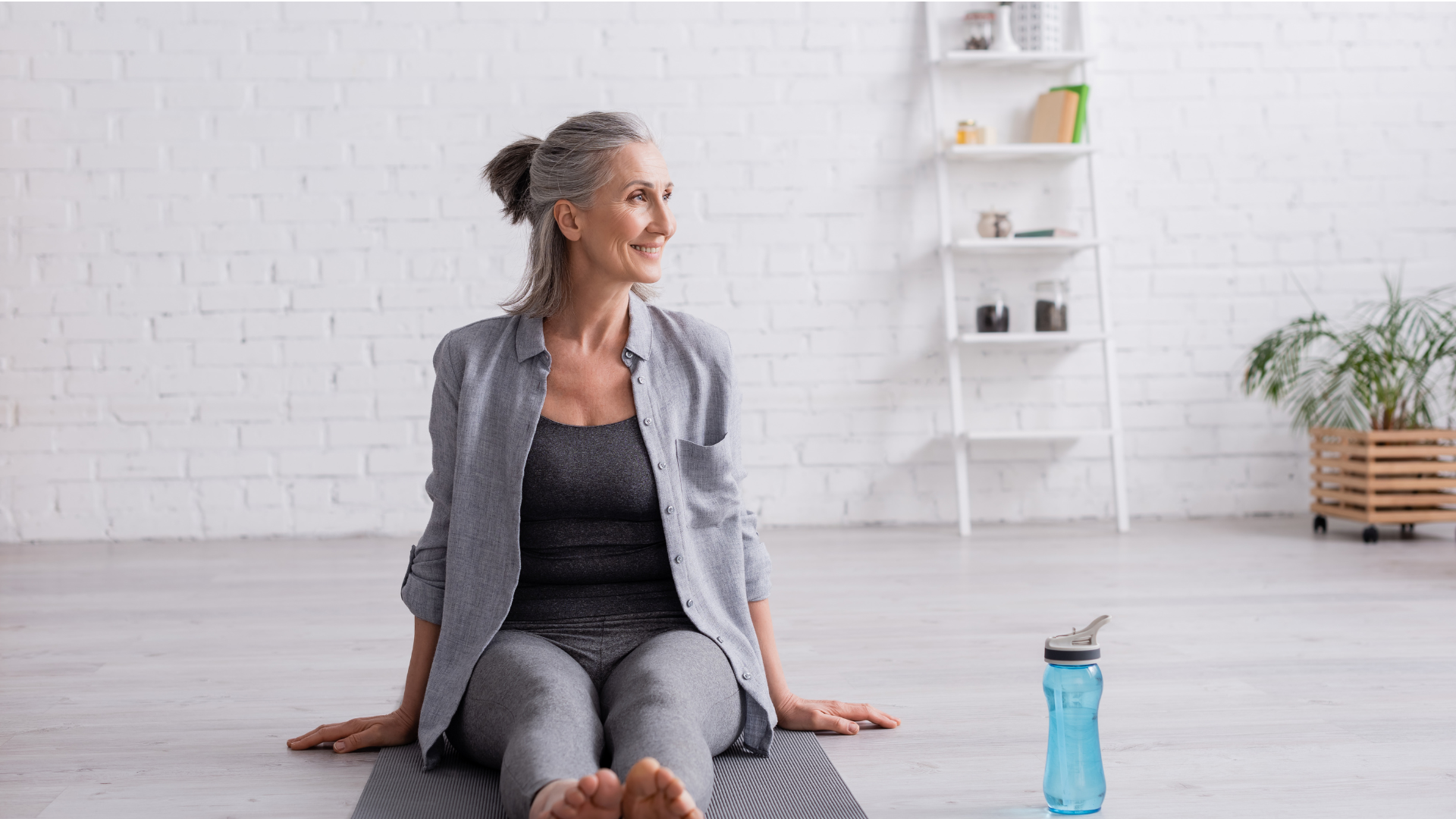Julie Gudmestad: Precursors to Chronic Pain – The Role of Muscle Imbalances
A Common Root Cause of Arthritis and Other Aches and Pains

Article At A Glance
In this article, yoga therapist Julie Gudmestad discusses a common pre-clinical condition predisposing us to pain and mobility issues over time: muscle imbalances. Learn how yoga can help.
Julie Gudmestad is a renowned yoga teacher, physical therapist, and C-IAYT yoga therapist with over 40 years of experience. We recently had the opportunity to speak with Julie about why muscle imbalances are a common trigger of age-related problems. Julie shares her insights into why they can be problematic to even the most experienced students, and how yoga can help.
YogaUOnline: Julie, we’re so glad to have you here. We’d love for you to share your perspective and experience with the subtle issues in the musculoskeletal system that most of us are not aware of, which often create a lot of problems down the road. The shorthand term for these issues is “muscle imbalances.” What exactly are muscle imbalances and why should we care?
Julie Gudmestad: You can think of muscle imbalances as a pre-clinical condition. It’s not serious enough to cause any problems or get caught on the radar of medical tests. However, muscle imbalances are often precursors to serious age-related problems down the road. That’s why we sometimes refer to them as aging triggers.
To understand what muscle imbalances are and why they cause problems, the first key is to understand their effects on the balance of the joints. Most any joint in the body has a set of opposing muscles that have the opposite actions. But when we get a muscle imbalance, one of those muscles gets too strong, too tight, or too weak.
As a result, the muscles around that joint can no longer interact with each other in a balanced way. This in term affects the functions of the joint and our range of motion.

One of the things that can happen when any joint in the body can’t complete its normal actions is it affects the other adjacent joints. For example, if I was going to reach for a glass of water, that action is completed by not only my fingers and hands but also by my wrist, my elbow, my shoulder, and even my lower back. If I have to reach for it, if my elbow won’t straighten, other joints down the line and up the line have to do more, and they can get overworked.
The Shrink to Fit Phenomenon
In today’s society, most people sit a lot. And that can trigger a so-called “shrink to fit” phenomenon.
For example, if we’re sitting all day with our arms forward, we tend to be short in the front body. But also, if we’re rounded over, we can get short in the abdominal muscles as well.
If we don’t know that these muscles need to be lengthened out, we spend hours a day for months and years, leaving them in a shortened position; they will gradually shrink and get shorter and shorter.

Now, those front muscles are pulling down on the front ribs. At the same time, the back muscles become weak and overstretched. So we’re short and tight in the front and weak and overstretched in the back.
The net result of all that is that there’s compression on your heart, your lungs, and your digestive organs. All of these organs are scrunched down. At the same time, the spine is pulled out of its normal curves, which sets the stage for some of the arthritic problems with the spinal compression on the front edge of the vertebrae.
How Muscle Imbalances Trigger Arthritis and Other Age-Related Issues
We tend to take for granted that we begin to develop arthritis and other so-called “wear and tear” conditions as we get older.
But what most people don’t realize is that arthritis often is part of a long cascade of changes in the body, which more often than not is set in motion once muscle imbalances begin to arise around the joints.
Once muscle imbalances arise, it often results in poor movement patterns, which in turn creates microtrauma and uneven wear and tear on the joints.
Microtrauma triggers those aches and pains that many people feel, particularly when they wake up first thing in the morning.
It’s a quality of life issue that happens with a lot of us as we get older. People become uncomfortable and they don’t feel good because they’re dealing with pain. And pain is stressful to the nervous system, so it becomes a vicious cycle. We begin to move less and less, and that further traps us in a vicious cycle of increasing stiffness and pain.
Nipping Issues in the Bud – Can Yoga Help?

If practiced in the right way, yoga offers a tremendous tool to deal with muscle imbalances.
If bones are fused or if there’s heavy scar tissue laid down, it’s harder to make a difference. But virtually all other conditions related to muscle imbalance can be helped by yoga.
Sometimes, you might need a physical therapist to give a little guidance. If you actually do have a herniated disc or bad rotator cuff damage, you might need a little bit of guidance from a healthcare provider, but everything can be helped by yoga.
Even if you have an irreversible condition, the practice of yoga, the breathing, the relaxation, and the imagery can make a huge difference in the amount of pain that people have.
I have been a physical therapist for 45 years, and I think that one of the most important things I brought from my yoga background to my treatment of patients was a very simple thing that we take for granted in yoga, which is learning how to breathe properly, how to open space for your lungs and heart, and how to relax.
One of the shortcomings of Western medicine is that we get slammed with negative images.
They put the X-ray up on the board and show you where your spine has degenerated or where you’ve got bone spurs in your shoulder, and we get hit really hard with these negative images.
Well, yoga can help bring positive images and ways that you can improve. Yoga can open space back up and correct the imbalances or misalignments.
We can replace those very negative, destructive images with positive images. We do that in yoga all the time. One of my guiding principles is to meet people where they are and to give them simple, accessible, short routines that they can do at home.
When you have old patterns, they’re not going to change in five minutes. You need to work away, but it needs to be gentle and accessible. Going straight to Sun Salutations and big backbends is not going to work for everyone.
Yoga sequences need to be progressive, they need to be accessible, and they need to feel good when practice ends. I think it is really our goal to give information but also to give tools that people can work with and feel good about.
Also, read...
Flat Feet Exercises: How Yoga Can Help
Jan 17 – Ram Rao, Ph.D.
Enhancing Body Awareness: 5 Ways to Nurture Your Neck In Your Yoga Practice
Dec 27 – By: Christine Malossi, RYT 200
Understanding Your Sciatic Nerve Pain and How Yoga Might Help
Dec 02 – By: Meagan McCrary, E-RYT 500
Related courses
Need an Energy Makeover? How Yoga Can Help You Boost Vitality
With Olga Kabel
Keys to Finding Inner Strength: A Yogic Wisdom Path to Developing Greater Resilience
With Arielle Schwartz

Lacey Ramirez writes for YogaUOnline and is an ERYT-200 yoga teacher, global health researcher, and writer based in St. Louis. Through her work, she seeks to make yoga accessible, inclusive, and equitable.
Lacey discovered yoga as a tool for centering during her years as a competitive runner. Since then, yoga has served as a way to connect with her body throughout her experience of pregnancy and parenthood. She teaches because she hopes others can use this sacred practice for calming, healing, and transformation.
As a yoga teacher, Lacey specializes in teaching restorative, Yin, prenatal, and trauma-informed Vinyasa yoga. She has also completed birth doula and prenatal/postnatal barre certifications and trainings. Additionally, she holds a Masters of Science in Global Health and Population from Harvard T.H. Chan School of Public Health. To learn more and connect, visit her website laceyramirez.com
Recent articles
Empowered Aging: An Interview with Yoga Teacher Ellen Saltonstall
Apr 17 – Sarah Bell ERYT-500, YACEP
4 Yoga Poses to Strengthen the 4 Muscles of the Rotator Cuff
Apr 15 – Leah Sugerman, E-RYT 500, YACEP
Exploring the Link Between Sleep and Anxiety
Apr 13 – Katie Potocnik Medina, LCSW
Categories
Upcoming courses
Recent articles
Almost there...
Sorry, we couldn't find anything...
Yoga and Healthy Aging
Empowered Aging: An Interview with Yoga Teacher Ellen Saltonstall
YogaUOnline: We are delighted today to be here with Ellen Saltonstall to discuss her…
Apr 17 – Sarah Bell ERYT-500, YACEP
Anatomy
4 Yoga Poses to Strengthen the 4 Muscles of the Rotator Cuff
The shoulder’s rotator cuff is a group of four separate muscles that work together…
Apr 15 – Leah Sugerman, E-RYT 500, YACEP
Insomnia
Exploring the Link Between Sleep and Anxiety
As a clinical social worker with years of experience working with adolescents and families,…
Apr 13 – Katie Potocnik Medina, LCSW


